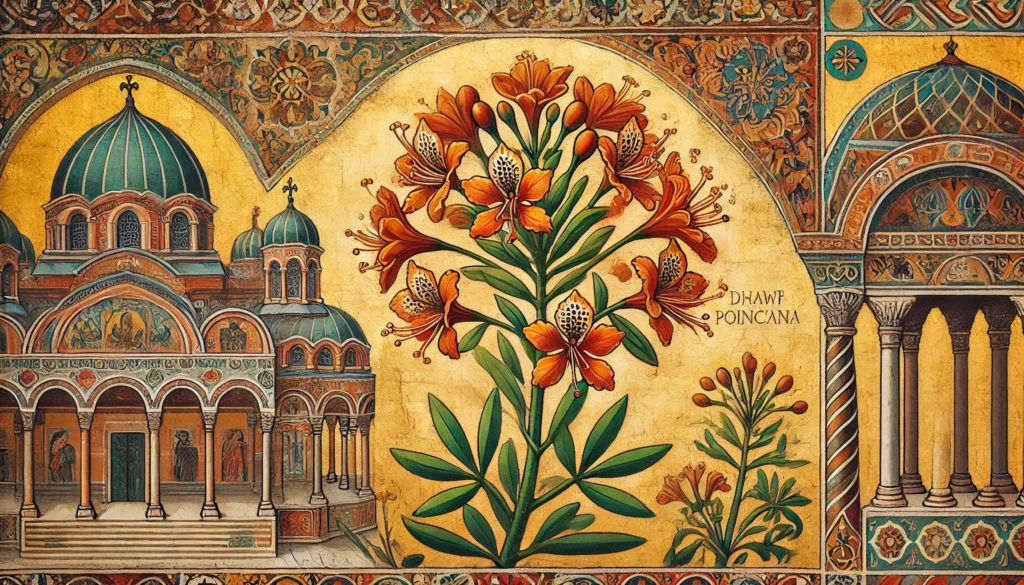

Home » Cat Plants » Could the Dwarf Poinciana Plant Harm Your Cat?

The Dwarf Poinciana (Caesalpinia pulcherrima), also known as pride of Barbados, peacock flower, or red bird of paradise, is a species of flowering plant native to the tropics and subtropics of the Americas. While this plant has beautiful red and yellow flowers, it unfortunately contains toxic compounds that can be harmful to cats if ingested.
The leaves, flowers, bark and seeds of Dwarf Poinciana contain hydrogen cyanide and tannins which are poisonous to cats. The seeds are the most toxic part of the plant.
Dwarf Poinciana is commonly grown as an ornamental shrub in warm climates and may be found in gardens and public landscaping.
Ingestion may cause mild gastrointestinal upset, but is generally not life-threatening.
Ingestion can result in mild symptoms like vomiting, diarrhea, or drooling. Rarely fatal but may require veterinary care.
Eating these plants can lead to more pronounced symptoms like abdominal pain, lethargy, or difficulty breathing. Veterinary intervention may be necessary.
Ingesting even small amounts can cause severe symptoms like organ damage, seizures, or cardiac failure without rapid treatment.
All parts of these plants are extremely poisonous to cats and can quickly lead to death, even with immediate veterinary care.
** Please note: Please note that toxicity level can vary based on the amount ingested and the specific cat. It's always best to keep these plants completely inaccessible to cats and seek immediate veterinary care or call the poison hotline if you suspect your cat has ingested any part of a toxic plant.
If a cat ingests any part of a Dwarf Poinciana plant, it may experience symptoms of toxicity. Common signs include:
In severe cases, ingestion can lead to more serious symptoms like tremors, seizures, difficulty breathing, and liver damage. If you suspect your cat has eaten any part of this plant, contact your veterinarian immediately.
If you bring your cat to the vet suspecting Dwarf Poinciana poisoning, here are the steps they may take to diagnose the issue:
Treatment will focus on supportive care, which may include inducing vomiting, administering activated charcoal, providing IV fluids, and monitoring organ function.

A: Yes, cats can be allergic to Dwarf Poinciana. Symptoms of an allergic reaction may include itching, sneezing, and skin irritation.
A: Yes, Dwarf Poinciana, also known as Caesalpinia pulcherrima, is toxic to cats. Ingesting any part of this plant can cause symptoms such as vomiting, diarrhea, and drooling.
A: Symptoms of Dwarf Poinciana poisoning in cats include vomiting, diarrhea, excessive drooling, and abdominal pain. Immediate veterinary care is recommended if ingestion is suspected.
A: To prevent contact, ensure that Dwarf Poinciana is not present in your home or garden. Keep your cat indoors or monitor outdoor activities closely to avoid exposure.
A: If your cat ingests Dwarf Poinciana, contact your veterinarian immediately. Do not induce vomiting unless instructed by a veterinary professional. Immediate medical attention is necessary.
A: Yes, Dwarf Poinciana is commonly found in gardens and as an ornamental plant. It is important to ensure this plant is kept out of reach of cats to prevent accidental ingestion.
Dwarf Poinciana is the national flower of Barbados. It was encountered by 17th century artist Maria Sibylla Merian in the Dutch colony of Surinam. In her work, she noted the plant was used in traditional medicine by African slaves and native Indian populations as an abortifacient. The leaves, flowers, bark and seeds were used for this purpose as well as for suicide by enslaved peoples.
Today, Dwarf Poinciana is widely cultivated as an ornamental in warm regions for its showy flowers. It is also still used in some traditional medicine practices. However, all parts of the plant remain toxic if ingested, especially to animals like cats and dogs.
Please note: The information shared in this post is for informational purposes only and should not be considered as veterinary medical advice.
🐾 A hilarious or heart-melting cat video
🐾 Our latest paws-on review of a cool cat toy